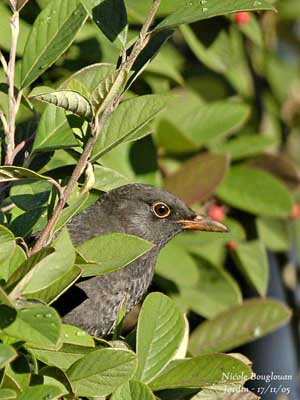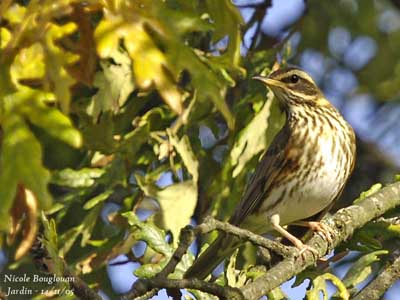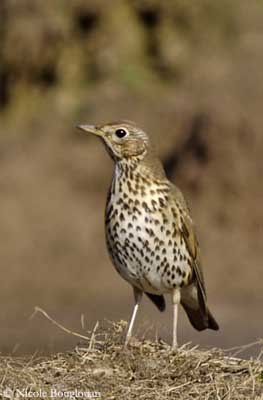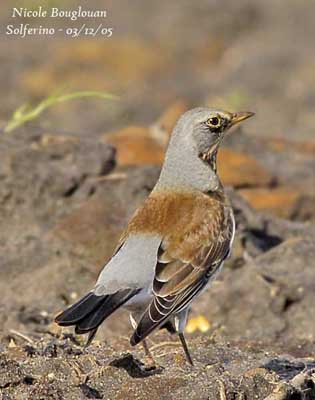

TURDIDAE FAMILY
Turdidae Family belongs to the Order Passeriformes. This family includes the different types of thrushes.
These birds are rather small. The bill is strong and straight, eyes are large, wings are mainly rounded and tail is square or slightly rounded, legs are medium-sized with strong feet.
Usually, all the juveniles of this family shows cryptic plumage heavily spotted. Male and female often differ, with female duller than male. Plumages vary from brown or grey, to blue, chestnut or orange, sometimes with conspicuous wing patches, eyebrows, collars… This family includes numerous birds with some similar attitudes and behaviours, but the plumage offers a wide range of colours and patterns.

Turdidae often perform undulating flight. The major part of the species is able to run and hop on the ground. They forage actively on the ground, in the soil, the leaf litter, and in vegetation.
These birds feed mainly on invertebrates, insects and earth-worms, but also on fruits and berries. They forage as well in deep shade in forests as in open areas. Their technique is very typical and described as “stop – start – pounce”! They also remove the leaves with the bill, thanks to a quick head flick. When the leaf litter is dry, we can hear the noise produced by such foraging behaviour!
Turdidae are territorial and almost always monogamous. The territory is occupied and strongly defended by both sexes. This territory must be rich and provide food all year round, particularly for resident species.
The male performs courtship displays with chases, and then, both mates fly together within the territory. When the pair is formed, the male attacks all the females with enter or approach the place. Courtship feeding can be observed in several species.

The song is usually very melodious, involving rich phrases, clear notes and whistles. Males usually sing from exposed perch in spring and during the breeding season, at dawn and dusk.
The most beautiful songs are uttered by the thrushes.

Turdidae can nest in tree-holes, rock crevices, cup-shaped or dome-shaped nests, on the ground and in burrows, according to the geographic location and the habitat.
Female usually chooses the nest-site and builds the nest. She assumes the most part of the incubation, but the male may feed her. Both parents feed the young and share the nesting duties.
The clutch size varies with latitude. The incubation lasts between 11 and 15 days, and this period is fairly uniform in this family. The chicks are altricial and remain at nest about 12 to 15 days. They often hide in the nearby vegetation before they are fully feathered and ready to leave this shelter.
The predation is the main cause of nest failures. Corvids, snakes, mammals are the most common predators, according to the range. Some species, and particularly the Fieldfares, perform mobbing behaviour against intruders, with the use of directional sticky faeces while flying above the predator. Different defence behaviours are developed according to the species.

Turdidae are usually widespread in their range. Numerous species are migratory and move at night.
As numerous other birds’ families, Turdidae are threatened by degradation of forests and habitat loss, disturbances, predation and parasitism in some areas.
Competition for nest-holes is important, and several birds accept nest-boxes when available. Several species have adapted to human environment which provides them food resources and protection. On the other hand, humans enjoy the wonderful songs of these birds!
Text and photographs by Nicole Bouglouan
Sources:
HANDBOOK OF THE BIRDS OF THE WORLD Vol 10 by Josep del Hoyo-Andrew Elliott-David Christie - Lynx Edicions - ISBN: 8487334725